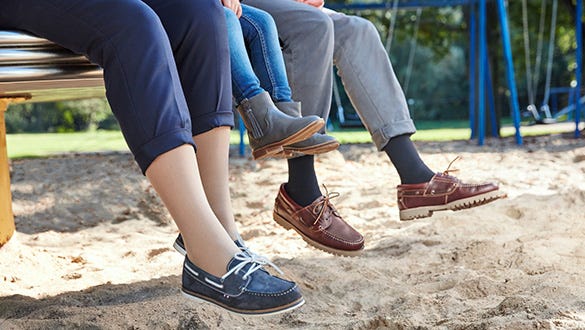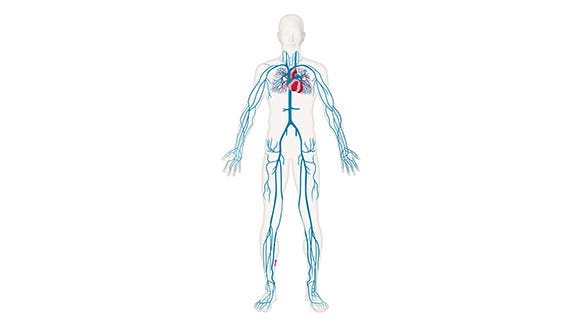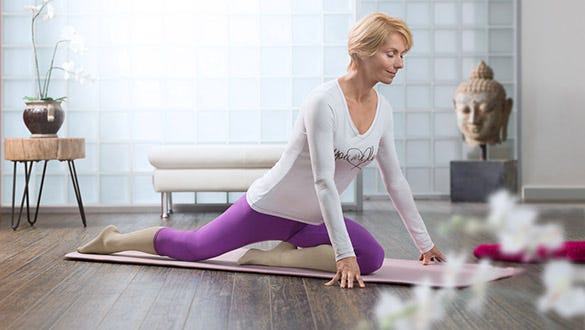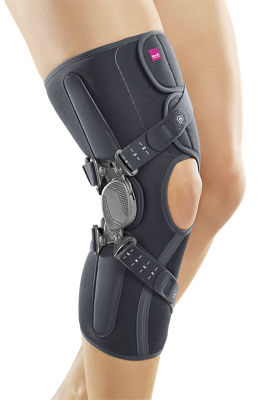- Free First Class Delivery
- Buyer Protection
- Secure Online Shopping
- Healthcare Professional? Click here
Veins
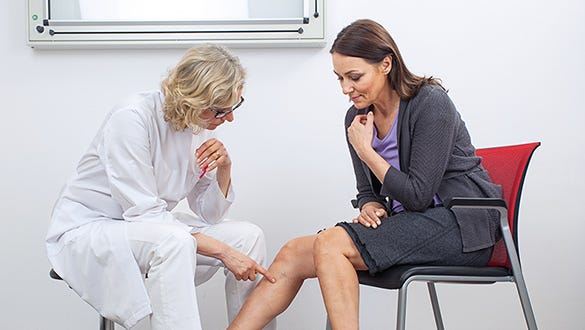

Categories
The function of the veins
Only 10 percent of people in the UK have healthy veins. Ninety percent have venous disease*. This can result in tired, swollen legs, varicose veins or a thrombosis. How do the veins work, how can we help them?
A widely branching system of blood vessels transports our blood around our bodies. The blood vessels are divided into arteries and veins depending on the direction in which the blood is flowing. The heart pumps the blood through the arteries to every last part of the body and supplies the cells with oxygen.
Importance of the venous system
In contrast, the venous system's task is to transport the deoxygenated blood from the body back to the heart and from there onwards to the lungs. Numerous tiny vessels, so-called capillaries and venules, collect the used, deoxygenated blood from all over the body and pass it onto the veins for return transport to the heart. Around 7,000 litres of blood flow back to the heart through our venous system every day. The deoxygenated blood in the venous system is darker than the oxygenated blood in the arteries. Another distinguishing feature is the blood pressure, which is considerably lower in the veins than in the arteries. The veins count as the low pressure system in our circulation. Many vessels in the venous system run parallel to the arteries. But there are also many additional veins that do not run alongside an artery, especially in the subcutaneous fatty tissues of the arms and legs. Thus our venous system is larger and denser than the arterial system.
Anatomical classification of the veins
The veins are divided into the individual parts of the body:
- Head veins
- Arm veins
- Abdominal veins
- Leg veins
The blood from the abdominal organs initially passes through the so-called portal vein into the liver, where it is filtered before being transported further to the heart. There are several systems in the leg veins. The major part of the return transport in the legs is undertaken by the deep veins of the leg that run through muscles. The rest of the blood flows back through the superficial veins of the leg that run from the ankles up to the hollow of the knee or the groin, where they connect up with the deep veins of the leg. In order to overcome the around one and a half metres from the legs, mother nature equipped our veins with a brilliant solution. In the lumen they have valve-like cusps that only allow the blood to pass in the direction of the heart like boats in a lock. If the blood flows up the leg as a result of the pressure exerted by the joint and muscle pumps, the valves open – if the blood wants to fall back into the leg under the effect of gravity, they close.
When veins become distended, call for compression
Physical exercise keeps the veins on the move.
As soon as we contract our muscles to walk, they squeeze the veins together. This pumps the blood up and out of our calves towards the heart. This is where the term "calf muscle pump" is derived from. After the contraction, the pressure in the emptied veins drops and more blood can be sucked in, which explains why physical exercise is so important for healthy venous function.
Without physical exercise, the muscles cannot exert mechanical pressure on the veins, which then become distended, thus preventing the valves lying inside them from closing properly any more. The blood pools and the superficial veins, which are not stabilised by muscles, become dilated. This is noticeable as a feeling of tension and tired, heavy legs and visible as swelling, spider veins or tortuous varicose veins.
This is when medical compression garments can help. With their defined pressure gradient – medi compression technology – mediven compression garments reduce the venous diameter. This enables the valves inside the veins to close again and transport the blood more quickly towards the heart. Tense legs relax and the formation of blood clots (thromboses) is prevented. Thanks to the treatment, users profit again from an improved sense of well-being and safety.
More information
* Orthopädie Technik (5/2013): Therapie mit medizinischen Kompressionsstrümpfen in Deutschland, Ergebnis der Bonner Venenstudien I und II. [Orthopädie Technik (5/2013): Treatment with medical compression garments in Germany, results of the Bonn Vein Studies I and II].

